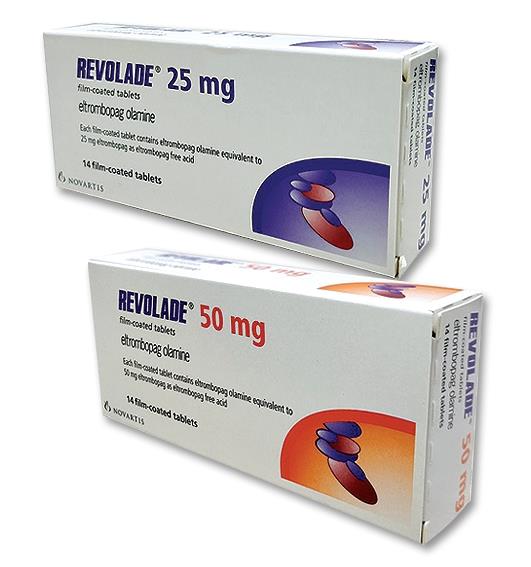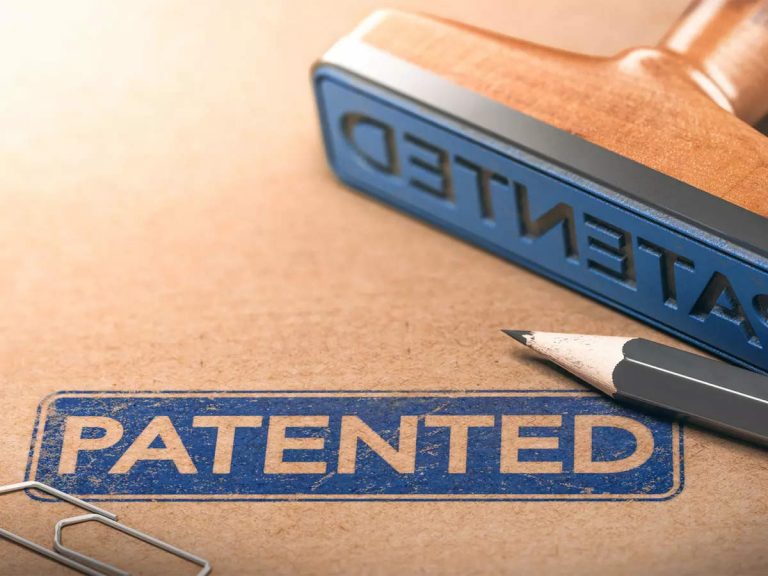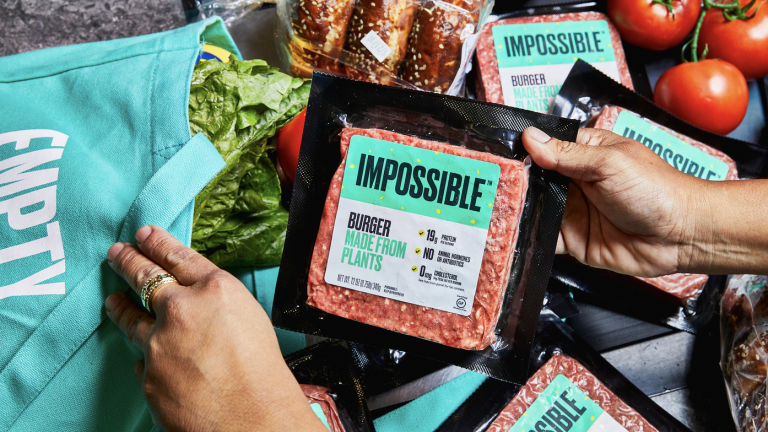Novartis AG Face off With Natco Pharma Pvt Ltd Over Patent Infringement
Novartis & Natco recently came head-to-head in court over EO, a salt of Eltrombopag, a critical component which boosts platelet production in patients suffering from thrombocytopenia. Marketed by Novartis AG as “Revolade” the average strip of this drug can cost up to 15,000 INR, approx 2200 INR per tablet. But, Natco Pharma has recently launched their branded Eltrombopag Olamine (EO) in the Indian market, which infringes on Novartis’s patent for EO.
The Delhi High Court recently granted an interlocutory injunction to Novartis against Natco’s use of Eltrombopag Olamine (EO). This means that the Delhi High Court has restrained Natco Pharma Pvt Ltd (Defendant) from using, manufacturing, importing, selling, offering for sale either by way of promotion or tender or any other means, exporting directly or indirectly dealing in Active Pharmaceutical Ingredient (API), Pharmaceutical products or formulation containing Eltrombopag Olamine (Eltrombopag bis(monoethanolamine)) either alone or in combination with any other compound or API or in any other form, as it may amount to infringement of suit patent IN 233161 of pharma major Novartis (Plaintiff).
The international filing date of the patent application for EO is May 21, 2003 and the proprietary right over EO was granted to GlaxoSmithKline LLC in 2009. Therefore, the patent will remain active till May 21, 2023, by the virtue of Section 53 (1) of the Patent Act. The EO patent bears the number IN 233161 (IN 161). After a trail of assignments, the rights were assigned to Novartis Pharma AG in 2015. The product was made available in the Indian market under the trade name “Revolade” by Novartis India Ltd (Plaintiff no. 2).
Eltrombopag Olamine (EO) is the orally active ethanolamine salt of eltrombopag, a small molecule, nonpeptide thrombopoietin receptor agonist with megakaryopoiesis-stimulating activity. Eltrombopag binds to and stimulates the transmembrane domain of the platelet thrombopoietin receptor, a member of the hematopoietin receptor superfamily. Activation of TPO-R leads to proliferation and differentiation of cells in megakaryocytic lineage and an increase in platelet production.
Novaritis submitted that Natco Pharma admittedly launched their branded Eltrombopag Olamine (EO) on the market, infringing on the suit patent since Natco Pharma had not received a license from Novartis.
Arguments of Nacto Pharma Pvt Ltd:
- Natco claimed a plea of invalidity of the EO patent under multiple subsections Section 64 read with other provisions. Section 107 of the Patent Act provides that in “any suit” of infringement, every ground on which the patent may be revoked (under Section 64) can be sought as a valid defense. The key term here being “suit”, without specifying its stage at which this defense plea of invalidity could have been taken.The court in Merck v. Glenmark (which itself relied on Bishwanath Prasad Radheyshyam) clarified that this claim can be made even at the interim stage. Natco argued that in parallel patent prosecution proceedings in the EU, US and Canada, the Eltrombopag patentee (GSK or Novartis) claimed EO as a part of Eltrombopag patent.
- Relying on Novartis v. UoI, Natco argued that coverage implies disclosure and there is no distinction between the two. Thus once in other jurisdictions when it has been claimed that Eltrombopag covers EO, Novartis, in India, cannot argue that IN 176 does not disclose EO. Furthermore, it also relied on Section 11(2) of the Patent Act which states that when a claim is based on matter disclosed in a previous provisional/ other specification in lieu thereof, the priority date of the claim is the date of filing the relevant specification. Therefore, according to Natco, since EO was covered under the Eltrombopag patent (IN 176), Novartis cannot claim that it was not disclosed in the IN 176 specification.
- Natco argued that the suit patent is covered under prior art IN 213176 (IN 176) which is a “compound and a pharmaceutical composition for use in enhancing platelet production.” The filing date for IN 176 is May 24, 2001 and thus its term expired in May 2021.
- Natco then argued that the EO patent is invalid owing to the Section 3(d) deformity. It argued that EO lacks an enhanced efficacy over Eltrombopag as enhanced bioavailability is not enhanced efficacy as held under Novartis v. UoI.
- Natco then argued EO lacked an inventive step over Eltrombopag patent and was obvious. It argued that EO was a monoethanolamine salt of known substance i.e. Eltrombopag and IN 161 nowhere disclose how it was an inventive step or why it was not obvious from Eltrombopag per se.
The court rejected Natco’s plea of invalidity on the following grounds-
- The Court noted that “ The infringer Natco Pharma, unable to dispute the charge of infringement on facts, seeks to question the validity of the suit patent. While Section 64 allows them to do so, the challenge has to be credible, not incredible. The defendants, in the present case, neither launched any pre-grant nor any post grant, opposition to IN 161”.
- The defendants also did not initiate any proceeding before IPAB or any other authority, for revocation, cancellation or removal of the suit patent from the register of patents. In such cases usually, the holder of the suit patent would ordinarily be entitled to an injunction against continued infringement.
- On anticipation by prior claiming and publication the court observed that the anticipation cannot be asserted by resorting to hindsight deduction. The court stated that Section (61)(a) will be applied when a claim whose validity is being challenged is identical to the claim in prior art. Furthermore, on Natco’s reference to the Eltrombopag applications in EU, US and Canada patent offices, the court hesitated to rely on them at an interim stage and instead suggested a more detailed assessment of the merit in Natco’s this argument in the course of the trial.
- On disclosure- coverage dichotomy, the court relied on Merck v. Glenmark, and ruled that there is a difference between “broad coverage” of a claim and “protected coverage” i.e. the one which will be entitled to protection under the Act. The court reiterated that coverage encompassed by the claim, as worded, read with disclosure which would enable a person skilled in art would be entitled to protection under Section 48. On the basis of the above understanding it clarified that coverage is wider than disclosure.In the present case, the court held that though the broad coverage of the IN 176 claims would embrace EO, it refused to accept that EO is claimed in IN 176.
The Court held that the Defendant is restrained by itself or through its directors, group companies or sister concerns, associates, divisions, assigns in business, licenses, franchisees, agents stockist, distributors and dealers from using, manufacturing, importing, selling, offering for sale either b way of promotion or tender or any other means exporting, directly or indirectly dealing in Active Pharmaceutical Ingredient(API), pharmaceutical products, or formation containing Eltrombopag Olamine (Eltrombopag bis (monoethanolamine)) either alone or in combination with any other compound or API or in any other form as may amount to infringement of suit patent IN 233161 of the Plaintiff 1 either under the brand Trombopag or any other brand.
This case study has been authored by Kinnari Bhatt, during her internship with MikeLegal.
References:
- https://spicyip.com/2021/12/delhi-high-court-grants-interim-injunction-to-novartis-against-natcos-use-of-revolade-patent.html
- https://medicaldialogues.in/news/industry/pharma/delhi-hc-restrains-natco-from-infringing-novartis-api-containing-eltrombopag-olamine-86187
- https://indiankanoon.org/doc/104159826/





